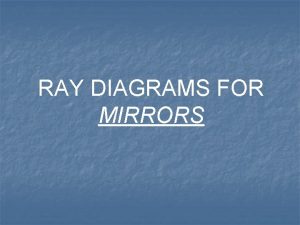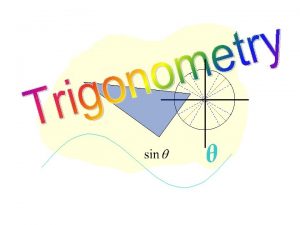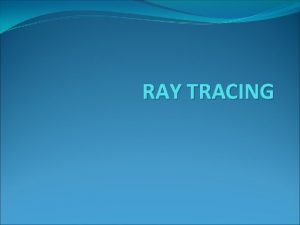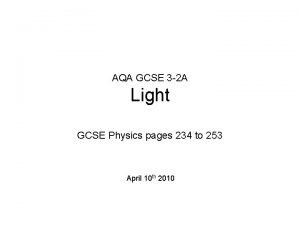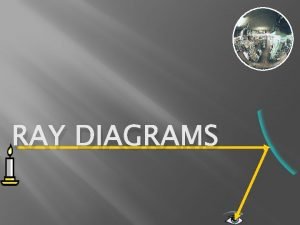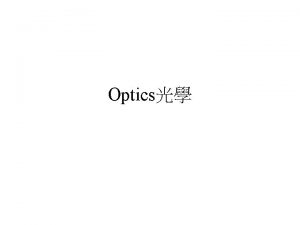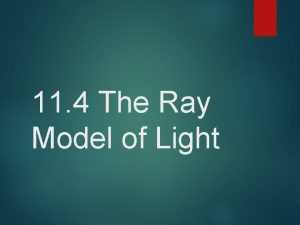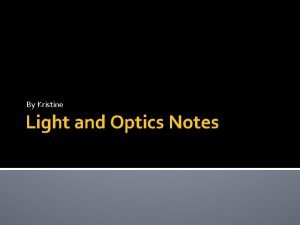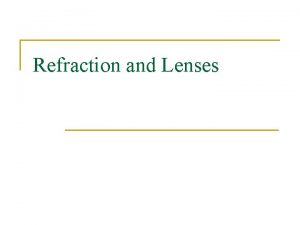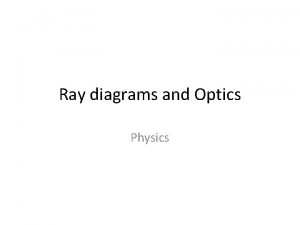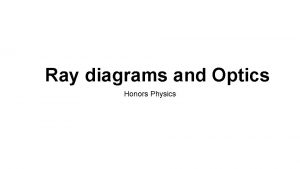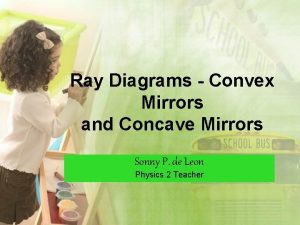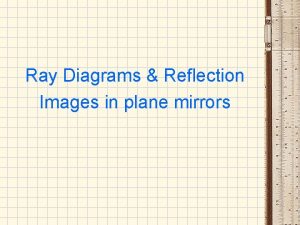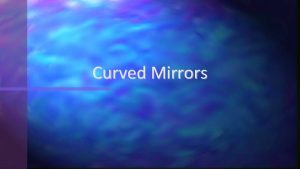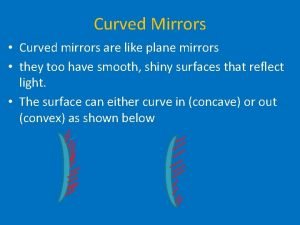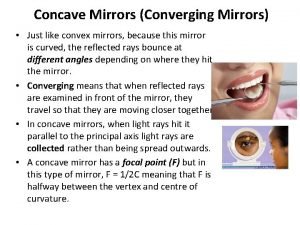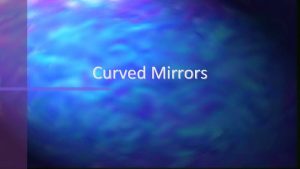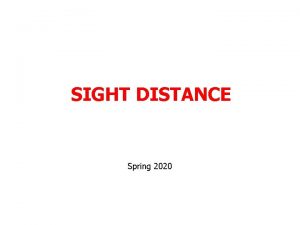Optics with Mirrors and Ray Diagrams Sight Your















- Slides: 15

Optics with Mirrors and Ray Diagrams

Sight • Your eye is a receptor that measures photons. • Your brain puts an image together from those measurements. • It always assumes light look a straight path. Light comes from here But your eye assumes it came from here So you see the image inside of a mirror.

Objects and images • Object- The origin of light. (whatever is in front of a mirror) • Image- A representation of the object. (what you see in a mirror) • Real side of a mirror- the area in front of a mirror where light really is. • Virtual side of a mirror- the imaginary area inside a mirror where no light really is.

Real and Virtual • With mirrors we commonly talk about real and virtual light. • Real light is really there. • Virtual light comes from the reflected light. There is NO actual light there, but we can see it, and it is important. Real Light Virtual Light Mirror

Ray Diagrams • A diagram showing the path of light rays from a single point on an object. • Where these rays intersect that point of the image will be seen. • On a flat mirror this is on the virtual side. • Therefore it is called a virtual image.

Rays of light • On a flat mirror, the angle of incidence equals the angle of reflection. • Incident ray is the incoming light rays. • Both angles are measure to a normal or perpendicular line to from the surface.

A Ray Diagram Object Real Side Virtual Side The angle of incidence equals the angle of reflection mirror Image forms here, where the light rays intersect

For flat mirrors • The distance of the object from the mirror (p) • is equal to the distance of the image from the mirror (q) • The size of the image is also equal to the size of the object.

Flat mirror ray diagrams Object this distance (p) mirror equals this distance (q) Image Object and image are the same size

Left to right reversal in mirrors • Ray diagrams can also explain why images appear backwards (left to right reversal) Right Side Left side mirror Right Side Left side

Magnification • Magnification- change in size of image compared to object (doesn’t have to get bigger) • M = - q/p = h’/h • h is height • If a distance is on the virtual side it is negative.

Magnification answers • • M > 1 then image is bigger than object M < 1 then image is smaller than object M = (+) upright M = (-) upside down

Spherical Mirrors - mirrors that have the shape of a part of a sphere

Types of mirrors • Concave mirrors- if you are inside the sphere looking out, (caved in) • Convex mirrors- if you are outside of a sphere looking in • Focal Point- (F) if parallel rays hit the mirror perpendicularly, where the rays come together • Focal length (f)- distance from focal point to mirror

Diagrams Concave mirror Light rays focal point Convex mirror These will never converge in real space. but they can on the virtual side. focal point
 Difference between ray optics and wave optics
Difference between ray optics and wave optics Ray diagrams for concave mirrors
Ray diagrams for concave mirrors Reflection and refraction venn diagram
Reflection and refraction venn diagram The interaction diagrams, use case diagrams are called as
The interaction diagrams, use case diagrams are called as Uml activity diagram tutorial
Uml activity diagram tutorial Terminal ray
Terminal ray Ray casting vs ray tracing
Ray casting vs ray tracing Lenses bbc bitesize
Lenses bbc bitesize Concave lens examples
Concave lens examples Object at infinity convex lens
Object at infinity convex lens Ray ray model
Ray ray model Purdue physics 241
Purdue physics 241 Advantage and disadvantage of fibre optic cable
Advantage and disadvantage of fibre optic cable Light and optics notes
Light and optics notes Bill nye light energy
Bill nye light energy Mirror lens equation
Mirror lens equation

